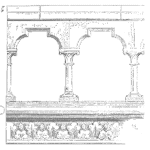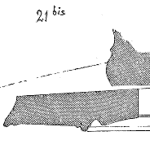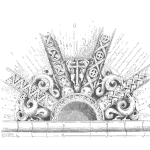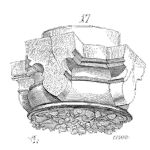
A longer video that provides an in-depth introduction to RCM basics and the RCM process.
[Read more…]Your Reliability Engineering Professional Development Site
Find all articles across all article series listed in reverse chronological order.
by Nancy Regan Leave a Comment

A longer video that provides an in-depth introduction to RCM basics and the RCM process.
[Read more…]
Reliability is one of the most overworked and misunderstood words in the world of facilities and infrastructure. Reliability is also one of the most powerful and important words. Properly evaluating and communicating reliability resolves risk, safety, quality, compliance, and human performance. Reliability also frames a powerful and effective systems approach instead of leaving gaps by cobbling together individual assets and components. Effectively communicating reliability starts with being able to quickly define it, [Read more…]
by Fred Schenkelberg 2 Comments

Just a short post to point to a paper on the accuracy of part count prediction techniques. A few years ago, I recalled seeing a paper that studied the difference between various parts count methods and actual results.
[Read more…]by Mike Sondalini Leave a Comment

I have led internal maintenance teams towards world class reliability, I have outsourced specialized maintenance functions (predictive technologies) and I have worked with companies outsourcing all maintenance.
Maintenance outsourcing continues to grow with 65% of large companies outsourcing some maintenance..but perhaps for the wrong reasons.
by Greg Hutchins Leave a Comment

Just how safe is “safe”? Should working in a chemical plant have the same level of risk as skydiving (which kills about 40 people per year in the U.S.A Should working in a plant be as safe as driving your car? Or should it be as safe as flying in a plane, which is safer than driving a car by two orders of magnitude?
While the term FAR may be simple to understand and may represent a useful yardstick, many companies, especially in the U.S., are unwilling to put such targets in writing. Imagine walking into company XYZ’s plush world headquarters office and on the wall in the reception area is a sign that reads, “We at XYZ consider it tolerable to kill 4 people per 100-million-man hours.” The lawyers would have a field day! However, as we shall see, some organizations have established such quantified risk targets.
[Read more…]by Ramesh Gulati Leave a Comment
by Hemant Urdhwareshe Leave a Comment

I am happy to share my third video on Design of Experiments (DOE-3). This is the third video in our series on Design of Experiments. It is recommended that viewers should watch the first two videos (doe-1-introduction-to-design-of-experiments and DOE-2: DOE Case Study of Spot Welding) before watching this video for better learning and understanding.
In this video, we have explained how to convert uncoded values of factor-levels to coded values and vice versa. We have also explained how to create a linear regression equation from the results of a full factorial two-level experiment.
[Read more…]by Ray Harkins Leave a Comment

Since launching my Root Cause Analysis class just over 5 years ago, I count myself remarkably fortunate to have been a part of the learning journeys of the 14,000+ students who have taken it. And a welcomed part of teaching courses online is fielding questions that come from students. In addition to clarifying for them various technical points of the course, I also get a “behind the curtains” look at the general training gaps in the quality profession. Afterall, that one student’s question may be in lingering in the minds of countless other quality professionals as well.
[Read more…]by André-Michel Ferrari 2 Comments

A parametric Life Analysis involves “forcing” or “imposing” a distribution’s parameters on a data set in order to obtain the “best fit”. However, it can lead to errors in results. The non-parametric estimation suggests that there are other approaches though not necessarily the easiest or “most elegant” ones. In the field of reliability engineering, we tend to like something so much that we use them in every “sauce”. A classic example is the Weibull Distribution. It has become so popular that Life Analysis is also known as a “Weibull Analysis”. As a reminder, the Weibull distribution is only one parametric distribution amongst a myriad of others, invented by Walodi Weibull in 1937. Dr Bob Abernathy’s New Weibull Handbook1 quotes: “the Weibull distribution provides reasonably accurate failure and failure forecasts……”. Thus, parametric distributions are good enough but not perfect to make a decision.
[Read more…]
Historically, Reliability Engineering of Electronics has been dominated by the belief that 1) The life or percentage of complex hardware failures that occur over time can be estimated, predicted, or modeled, and 2) the Reliability of electronic systems can be calculated or estimated through statistical and probabilistic methods to improve hardware reliability. The amazing thing about this is that during the many decades that reliability
[Read more…]by Mike Sondalini Leave a Comment

A good way to change mindsets and behaviors toward preventing forced outages and stoppages is to show everyone in the operation the total business losses of breakdowns.
It is incredible what the total business losses of breakdowns can rise too. Plant and equipment breakdowns are ultimately due to having wrong thinking and doing wrong practices. In this response to an FAQ, I advise to tell your people the true costs of breakdowns. Let them share the pain and loss suffered by the business and start them thinking of better ways to care for their operating assets.
[Read more…]by Greg Hutchins Leave a Comment

Businesses exist because they are formed by entrepreneurs. They exist to earn a return for the business owners and shareholders.
Organizations exist to fulfill a specific social purpose and to satisfy a specific need of society. The potential for creating value for their customers and stakeholders is a key motive for all types of organizations, including the public sector and not-for-profits.
[Read more…]by Hemant Urdhwareshe Leave a Comment

Dear Friends, we hope you have seen our first video on Introduction to Design of Experiments DOE)! Here is my second video on DOE! I have illustrated a case study of DOE application to Spot Welding process! The Case study is about application of Full Factorial Design with three factors, each at two levels. The video assumes that viewers have seen our first video on Introduction to DOE.
[Read more…]by Nancy Regan Leave a Comment

Eighteen years ago, at a small restaurant in Bath, England, a former head of the Royal Navy’s RCM program said something very poignant to me. It answers this question.
[Read more…]
Assessing critical infrastructure and facilities is essential for maintaining performance as systems age. Mid-level engineers are frequently tasked with leading a reliability assessment with limited training. The good news is that you don’t need to be a subject matter expert to be successful. But you do need a structured collaboration approach and a mental model to help you through the tough spots. Success rises and falls based on the quality of the facilitation. [Read more…]